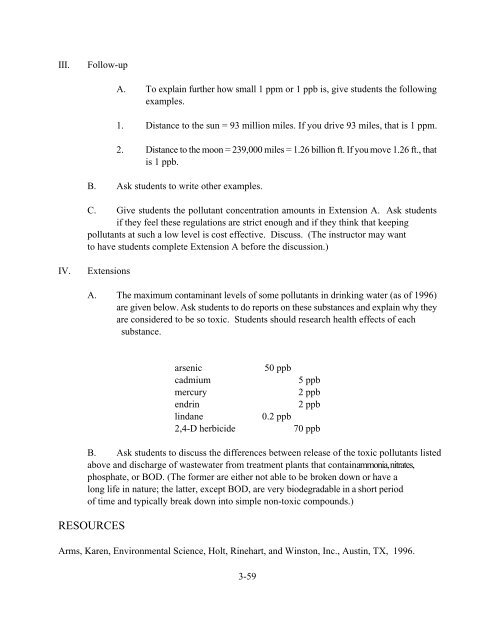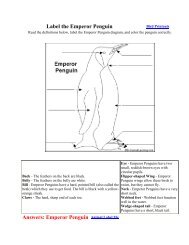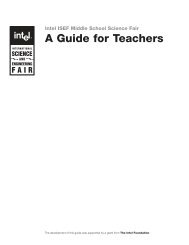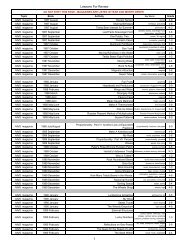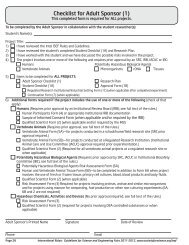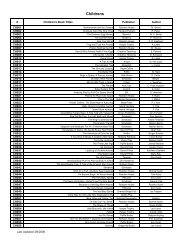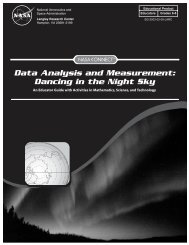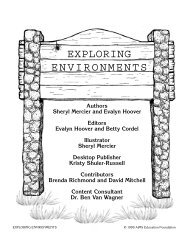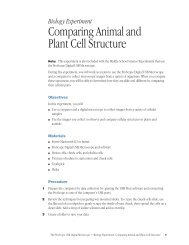BIOGRAPHY OF A RIVER
BIOGRAPHY OF A RIVER
BIOGRAPHY OF A RIVER
You also want an ePaper? Increase the reach of your titles
YUMPU automatically turns print PDFs into web optimized ePapers that Google loves.
III.Follow-upA. To explain further how small 1 ppm or 1 ppb is, give students the followingexamples.1. Distance to the sun = 93 million miles. If you drive 93 miles, that is 1 ppm.2. Distance to the moon = 239,000 miles = 1.26 billion ft. If you move 1.26 ft., thatis 1 ppb.B. Ask students to write other examples.C. Give students the pollutant concentration amounts in Extension A. Ask studentsif they feel these regulations are strict enough and if they think that keepingpollutants at such a low level is cost effective. Discuss. (The instructor may wantto have students complete Extension A before the discussion.)IV.ExtensionsA. The maximum contaminant levels of some pollutants in drinking water (as of 1996)are given below. Ask students to do reports on these substances and explain why theyare considered to be so toxic. Students should research health effects of eachsubstance.arsenic 50 ppbcadmium 5 ppbmercury 2 ppbendrin 2 ppblindane0.2 ppb2,4-D herbicide70 ppbB. Ask students to discuss the differences between release of the toxic pollutants listedabove and discharge of wastewater from treatment plants that containammonia, nitrates,phosphate, or BOD. (The former are either not able to be broken down or have along life in nature; the latter, except BOD, are very biodegradable in a short periodof time and typically break down into simple non-toxic compounds.)RESOURCESArms, Karen, Environmental Science, Holt, Rinehart, and Winston, Inc., Austin, TX, 1996.3-59


